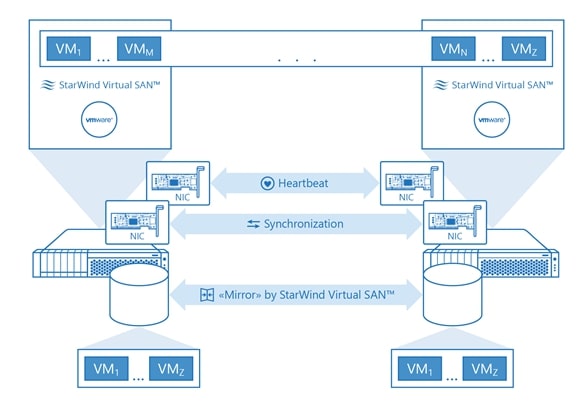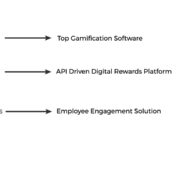Have you ever wanted an inexpensive, equipped to handle fault tolerance, and yet easy-to-manage storage pool for your business? If yes, then Virtual SAN (Storage Area Network) is your answer. By making use of popular protocols such as iSCSI, iSER, and SMB3, software-defined storage can become extremely accessible just by mirroring internal storage. StarWind’s VSAN is an excellent example of VSAN which is highly rated amongst prominent users of the software.StarWind VSA eliminates the need for shared physical storage. It mirrors internal flash and storage resources between hypervisor servers. It is so flexible that it can be even run on off-the-shelf hardware as well.
StarWind’s Futuristic Performance And Capacity
With the rising needs of data and storage capacity, software-defined storage has become the most prominent solutions to choose from. With IT giants flagging software-defined storage at an exorbitant price range, the solution becomes unviable for small and medium businesses as the total cost of ownership shoots up. With this in mind, StarWind has designed a Virtual SAN targeting enterprise remote and branch offices (ROBO) and small-medium businesses (SMB).
StarWind is deployed using HyperConverged architecture where the software is run on the same physical host where the client is running. It also lets you deploy Compute and Storage Separated architecture where the software runs on dedicated physical boxes.
HyperConverged Architecture
When VSAN becomes part of the hypervisor, the resultant tool delivers outstanding performance and unified administration. Data replication is done on Windows storage server with all major virtualization platforms as the native application is nested inside a VM on VMware vSphere.
StarWind leverages all benefits using a VSAN by making use of the local storage to maximize performance and minimize latency. By bonding all I/O to the local hypervisor node users can reap multiple benefits compared to a dedicated hardware solution:
- As Hypervisor reads only from local storage, high-speed synchronization network links are used for data replication which is used to write to the partner hypervisor nodes
- Since the cache is local, the performance gain is much better as it doesn’t rely on a slow network
- Unnecessary iSCSI lock overhead is eliminated as hypervisor nodes do not interfere when accessing the LUN thereby increasing performance and fault tolerance

Compute and Storage Separated Architecture
StarWind VSAN also runs on a dedicated set of hosts. It creates a separate storage layer that is used by client hypervisors. The HyperConverged scenario is increasingly becoming an industry trend but the differentiation of computing and Windows storage server is advised only if there is a scope for scalability.
StarWind’s Compute and Storage Separated (or Dedicated) architecture lets you scale compute and storage resources independently. This becomes easier to implement when CapEx and OpEx are lower as there is no need to purchase hardware that will be essentially wasted. This ensures the system can be created specifically for a particular task.
Pros and Cons of StarWind VSAN
Pros
- 90% of raw performance which is far superior to 60% raw performance of Microsoft S2D and 15% of VMWare VSAN
- Specifically built for fast-SSD and NVMe environments
- Data replication is synchronous and ensures instant failover and fault tolerance for critical applications
- Get complete access to all features and unleash the power of iSCSI stack from the start
- Easy to manage using existing virtualization admins to monitor and operate using StarWind management console
- Excellent 24/7/365 support and option to opt for ProActive Premium support for instant response
- Extremely affordable pricing which is based on per-node licensing and the number of locations having VSAN installed
Cons
- It may take some time to get a hang of the UI, but it becomes easier once you become familiar with the software
- Cluster configuration may be time-consuming though it is not at all complicated
The biggest difference between the paid and free version is that the free version lets you have 3 nodes whereas the paid version has unlimited nodes. The deployment methods and capabilities are advanced in the paid version.
Final Thoughts
StarWind VSAN is designed with SMB’s in mind and skyrockets you even with two nodes. One crucial factor is that it lets you maintain and scale on-the-go. With fault tolerance a primary aspect that this VSAN focuses on, you don’t have to worry even if you lose 50% of the infrastructure. Data replication is extremely fast and helps you enjoy a perpetually smooth performance at an affordable cost. Do let us know what you liked about StarWind’s VSAN in the comments.



